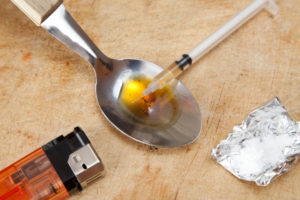What is Heroin/Why is it so dangerous?
 Heroin is a powerful narcotic and central nervous system depressant that is particularly additive and dangerous because it enters the brain so
Heroin is a powerful narcotic and central nervous system depressant that is particularly additive and dangerous because it enters the brain so
What is a heroin overdose?
When heroin enters the body, breathing and heart rate may slow to dangerous levels. This can lead to overdose. An overdose may result in serious, harmful symptoms and even death. Brain damage can occur if the brain is deprived of oxygen for any length of time. Death from overdose can take anywhere from several minutes to several hours because of anoxia (lack of oxygen) resulting from the breathing reflex being suppressed. An overdose is immediately reversible with an opioid antagonist injection such as Narcan/Naloxone. But treatment must be administered quickly as time is of the essence in preventing an overdose fatality.
What factors impact overdose?
Potency – street heroin varies widely in potency so it is difficult for users to know how potent a particular batch of heroin is.
Heroin tolerance (the amount of a drug that you need to use in order to get “high” decreases rapidly with even small periods of abstinence (several days). So the amount one needs to get high one day may cause an overdose the next day or after a short period of non-use.
Street heroin is often cut with adulterants and these can cause additional problems including increasing the risk of overdose. Many of the additives in street heroin may include substances that do not readily dissolve and result in clogging the blood vessels that lead to the lungs, liver, kidneys, or brain. This can cause infection or even death of small patches of cells in vital organs. Immune reactions to these or other contaminants can cause arthritis or other rheumatologic problems.
Other drugs also increase the likelihood of heroin overdose.
- Alcohol and benzodiazepines (Valium, Xanax): since both are depressants, increase the chance of death due to lowered heart rate and respiration.
- Methamphetamines: since the effects of this stimulant with the later part of heroin’s depressant side may mask the effects of one another, it makes it more likely to overdose.
- Cocaine: When used in a combination with herion it is known as “speedball.” Cocaine can completely throw off the rhythm of the heart resulting in death since cocaine and heroin both initially raise heart rate and then heroin decreases it rapidly.
- Ecstasy/Molly: masks the effects of the depressant heroin and makes overdosing more likely.
- Location of use may also impact overdose. A chronic user who always uses in the same place may experience an overdose if the same dosage is taken in a new environment.
- Different people even of the same size and using the same amount of the drug, can become addicted and overdose at different rates and from the same amount of heroin.
- Addiction and overdose may occur with any route of administration (injecting, snorting, or smoking).
What are the signs of a heroin overdose?
- Shallow breathing
- Drowsiness
- Pinpoint pupils
- Dry Mouth
- Bluish skin, fingernails, lips
- Tongue Discoloration
- Weak pulse
- Stomach spasms
- Constipation
- Coma
- Cold/Clammy Skin
- Disorientation
- Seizures
- Muscle spasms/rigid muscles
What to do in case of an overdose?
CALL 911 immediately.
Make the decision to help save a life. Remember that time is of the essence; there may be only a narrow window of opportunity to get help for someone who is overdosing.
New York State has a Good Samaritan Law that will help protect people who call for help in an alcohol or other drug emergency. The law says (in part): “A person who, in good faith, seeks health care for someone who is experiencing a drug or alcohol overdose or other life threatening medical emergency shall not be charged or prosecuted for a controlled substance offense.” (Please note that the Good Samaritan Law applies to controlled substance and marijuana offenses and does not apply in offenses involving drug sales or to prosecutions for other offenses that, depending on the facts, might be charged.)
Where can I get more information and/or help?
In New York State, treatment at a licensed substance abuse agency is available regardless of ability to Call the New York State Hopeline at 877-8HOPENY(877-846-7369) for a list of programs.
Prescribed drugs are available from physicians and treatment agencies that can ease discomfort and lessen cravings for opiate use.
For more information visit https://www.combatheroin.ny.gov/
Some cautious optimism!
The concern about the use of heroin is great because an overdose of this drug is so catastrophic in most cases. However, the latest information from the Monitoring the Future (MTF) survey about youth substance use offers some hope.
Despite the ongoing opioid overdose epidemic, past-year prescription opioid misuse (reported in the survey as ‘narcotics other than heroin’) continued to decline among high school students reflecting a significant decrease over the past five years. In addition, heroin use is at the lowest rate among 8th, 10th and 12th grade students since the MTF survey began. There was a continued steady decline in the perception of availability of heroin among students surveyed despite increasing use among adults.
In addition, there is a continued high rate of disapproval of taking heroin occasionally—95.3 percent among 12th graders. High rate of disapproval of drugs are associated with lower rates of use.
Source: Patricia Murphy Warble, LCSW
